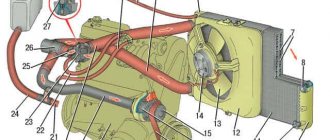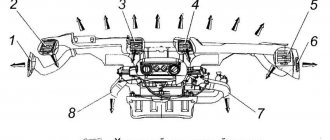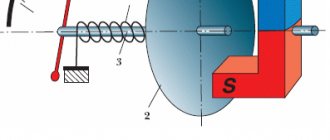How to defrost the washer reservoir
- 40 0 97k
- 2 0 6k
The most effective way to warm up a reservoir with washer fluid frozen inside is to place it in a place with above-zero temperatures: a warm garage, a car wash, a shopping center parking lot.
Or you can remove it and take it home until the ice completely melts. However, they all require quite a lot of time. No less effective will be the following: pouring winter washer concentrate (“anti-freeze”), alcohol-containing liquids or boiling water. But such options have their own nuances and application features. In addition to the basic defrosting methods, there are other options for warming up the washer reservoir, which, depending on your capabilities, can also be successfully used.
There are many options for defrosting or warming up the washer reservoir in your car in winter. They all have their pros and cons, which we have compiled in the table below. For a detailed description of each method, read the article.
There are several methods to drain water from the windshield washer reservoir:
- turning on the wipers with washer and running out all the liquid;
- suction with a bulb, syringe, spray bottle with a hose of sufficient length;
- by disconnecting the washer supply hose from the line and draining the liquid into a bottle (it is better to remove the wiper fuse so that they do not waste time on the glass).
Is the washer reservoir frozen? Warm up immediately!
Poor-quality anti-freeze or ordinary water, which did not resist the frost and naturally turned into ice, can return back to a liquid state with the arrival of a thaw. To force defrosting, you need to find heat.
Heat the whole car
The easiest way is to warm up the entire car. How can this be organized? There are three options:
- Drive the car into a warm parking lot, for example, in the basement of a shopping center.
- Warm up in a warm box.
- Visit a car wash and reserve a full package of services. External and internal washing with finishing work in the form of polishing plastic panels and applying wax to the body takes a lot of time, which may be enough to defrost the windshield washer.
The main disadvantage of complex heating is the large amount of time spent on defrosting. It will take about a day for the water to thaw if the car is placed in an underground parking lot. Things are more cheerful when I grabbed a demi-season anti-freeze, but still...
Heat the tank only
An excellent alternative to complex heating is defrosting only the washer tank. A failsafe option: remove the tank and take it home under a stream of lukewarm, and then hot water. The ice will quickly turn into liquid and the container can be emptied. Just don’t direct a hot jet at a cold part - it will crack instantly.
Advanced method: pour in some liquid and put a 12V boiler in the tank. It is important that the ice in the tank is not up to the neck. Otherwise, you won’t be able to add water, which means there will be nothing for the boiler to heat. That is why the filling volume of the tank is limited to between 1/2 and 3/4. We presented all the arguments for such a restriction in last year’s article about how much windshield washer fluid to pour into a car.
With the advent of powerful construction hair dryers, it became possible to heat the tank together with the pipelines. The method is good, but requires extreme caution and the presence of a 220 V outlet near the car.
Why does the fluid in the washer reservoir freeze?
With the first frost, it is not enough to simply drain the water from the tank; you must thoroughly rinse the entire system. If you immediately fill the “anti-freeze”, it will not help to instantly melt the ice plugs that have formed. The pump motor, supply lines and nozzles, spraying liquid onto the glass, may freeze.
The same effect will occur if the non-freezing liquid does not meet the declared characteristics, when the frost is too severe or the amount of water in the composition exceeds the minimum allowable percentage for a given temperature.
Most often, drivers simply forget that there is water in the washer. The massive use of antifreeze in engines has led to the fact that the zero temperature threshold has ceased to play a role in the operation of cars. The error is detected only when the glass, translucent from dirt, needs to be cleaned.
We heat the tank itself
If the tank is filled with liquid up to the neck, it is recommended to work on the container.
Using a hair dryer
This option is suitable if the car is located near a power source and you have a hair dryer itself. In this case, direct a stream of warm air to the tank.
Do not bring the hair dryer too close and make sure that the stream is not hot. In both cases, you can deform the plastic container. As it thaws, pump out the water using a bulb and tube.
A household hair dryer will not cope with the task
Warming up the engine
When answering the question of how to thaw water in the washer reservoir in winter, experienced drivers most often recommend this method.
You don't need alcohol, a hair dryer or a portable socket. As a bonus, the ice will thaw not only in the container, but throughout the entire pipeline. In this case, everything happens due to the heat generated by the running motor.
It is best to warm up the engine indoors, but with the doors open
First, you need to start the engine itself and warm it up to standard operating temperature. The hot air circulating in the engine compartment will begin to affect the ice crystals in the tank and hoses.
You can check whether the process has started after 10 minutes. If you find that the ice crystals have begun to melt, continue to keep the motor running.
If the whole process is carried out outside in the cold, you will need several hours to get the desired result. This is why experienced drivers recommend driving into a warm room, such as a garage or underground parking. Ideally, you can cover the hood with a car blanket. In this case, in literally half an hour you can completely defrost not only the tank, but also the entire system, including the injectors.
The water must be drained and the main line must be fed with a high-quality composition
Motorists often recommend combining several methods, for example, starting the engine and simultaneously pouring hot water, alcohol or anti-freeze into the tank. This will speed up the process significantly.
Methods for defrosting the washer
So that the solution in the tank begins to defrost. He, according to the laws of physics, must increase his temperature above about Celsius.
Depending on the degree to which the liquid is frozen, your resources and time range. The defrosting process can occur in different ways.
If the washer fluid has turned into “total ice”. You will need much more time than fighting with a slightly frozen compound.
The most common heating of the tank:
- heating in a warm shed or garage;
- heated water;
- frost-resistant additives;
- alcohol-containing liquid;
- defrosting the tank separately from the car;
- motor heating;
- heating with an industrial hairdryer.
Warm room
If you wish, you can always use your brain and solve the problem of a warm room. If you don’t have your own warm garage.
You can stop by a friend’s garage or make a long-planned visit to a service station.
Or go to the underground parking of the shopping center. Perhaps a couple of hours will be enough to defrost the washer fluid in the washer reservoir.
Sometimes you just need to look at the weather forecast for the coming days. Perhaps warming is expected and you should just wait a little longer to defrost.
If you absolutely do not have time to wait for such a long time. And the degree of freezing of the tank is higher than just a couple of pieces of ice, it is worth using other methods.
Heated water
The method is used when the tank capacity freezes to a third of its volume. Do not use boiling water, as the tank may become deformed or even crack. Optimal, pour water at a temperature of 50-60 degrees.
After the result is achieved and your tank has warmed up, the liquid must be drained under the car or into a container. However, this method has disadvantages, since the ice in pipelines and sprayers often does not heat up.
This can be achieved using a hot motor, but the sprayers themselves can sometimes be warmed up a little by hand.
Non-freezing liquid
The process of kindling with hot water is similar to the procedure involving non-freezing liquid, that is, “anti-freeze”. This composition can be used as is. But if you warm it up additionally by installing a warm engine nearby, the effect of the product will double.
If the freezing of the tank was not large-scale. And there is no extremely low atmospheric temperature outside the car. The liquid in the tank can be left without replacing with a new one. You will simply end up with a slightly diluted washer solution. Which will work no worse than the previous one.
How to defrost water in the washer reservoir
In general, the procedure for solving the problem that has arisen is elementary:
- defrost ice; drain the thawed water; fill with anti-freeze.
But the time costs and nature of the manipulations will depend on:
- volume of frozen water in the tank; possible freezing of the entire washer system; the performance of the motor supplying the washer.
1. Therefore, if possible, you need to visually assess or remember how full the washer reservoir is with water. In case:
- there is space in the container free of ice, and the electric motor is functioning,
How exactly to do this, read in the section below.
2. In a situation with a non-working motor, you will have to contact an auto electrician. Determining the state of affairs is very simple:
- The running engine will make noise when trying to apply washer to the windshield.
How to defrost ice
You can defrost water:
- pour heated water, antifreeze or just vodka into the tank; When you go to the car wash, wash your car with hot water; by placing the car in a warm garage or service station.
Each of the first two options has its pros and cons.
Defrosting (thawing) when the system is not completely frozen
The situation is most convenient for the driver, especially if a thaw is predicted.
1. Heat the liquid to be filled to 70 degrees and gradually add it to the washer fluid reservoir.
If the option is positive, the ice will gradually thaw, and water diluted with alcohol or anti-freeze must be released through the spray nozzles on the hood.
2. Carry out the process until the tank is completely empty, into which you then pour anti-freeze.
3. Blow the system filled with “winter” fluid through the washer supply nozzles several times.
A warm box will solve the problem
The simplest thing you can do is go into a heated room for a few hours. The ice in the tank will melt naturally without causing any harm. Also, the advantage of this method is that you can defrost the liquid not only in the washer reservoir, but also in the hoses. A service station, car wash or heated garage/parking lot is suitable as a warm box.
But among all the positive aspects of this method, there are also several disadvantages:
- Time. Not every person will find so much free time to while away it in a warm room, especially on weekdays. Also, few people are ready to “part with” their car for several hours, especially when they need to move around with something.
- Money. You will have to pay for the car to spend some time in a warm room. For example, in the northern regions, parking lots/car washes/service stations earn a considerable share from those who just need a warm place.
Defrosting with hot water
If you notice that the washer reservoir is frozen and do not have time to drive away from your house, you can return, boil water in a kettle and take it with you to the car. Before adding hot water, the engine must be warmed up to operating temperature so that the engine compartment warms up at least a little. This is done in order to defrost the ice in the tubes.
When the engine has warmed up, you need to pour approximately hot water into the washer reservoir (it is important not to use boiling water) and wait a few minutes. After this, you can try applying water to the glass. This method is very effective and will help solve the problem without much financial or time investment. But not in all situations hot water will help defrost the tank. This method will not work if:
- your washer reservoir is more than half full. The hot water temperature is not enough to defrost that amount of ice;
- The outside temperature is below -5 degrees. Even if you manage to defrost the liquid in the tank, the ice in the tubes will not melt in severe frost;
- you want to save the washer fluid in the tank for later use in the spring. Once you mix washer fluid with water, you can forget about its effectiveness.
Article on the topic: How to disable the immobilizer and not damage the car
We drown the ice with vodka or alcohol
In vodka, the alcohol content is at the level of 40%, which, if it gets on ice, will cause a reaction with the release of heat.
Advice! If you add pure alcohol (96%) to the tank, the melting process will occur much faster.
When it's too cold outside and there's too much frozen water, the reaction will be slow or not happen at all.
To enhance the effect, vodka is first brought to a boil and then poured into the tank. The procedure is carried out in several approaches so that the hot liquid does not harm the plastic, since a sharp temperature change can lead to deformation of the structure.
What if the tank is under the bumper?
Everything would be fine, but the layout of the engine compartment does not always allow easy access to the windshield washer system reservoir. This is on Vesta, Logan, Duster, the reservoir is in the free access zone. But what about the owners of Kia Rio, Hyundai Solaris and other foreign cars, under the hood of which you can only see a neck with a blue cap.
Our colleagues from the magazine “Behind the Wheel” urge you to discard the idea of labor-intensive dismantling of the tank. Instead, the well-known editors proposed a very interesting method:
- Heat a good anti-freeze solution or a concentrate diluted to the minimum temperature in a water bath.
- Pour the heated mixture into the frozen container.
- Mix the liquid in the tank using a tire compressor for 2-3 minutes.
- Drain the cooled washer fluid from the reservoir into a container using the old-fashioned method of draining gasoline from the fuel tank. Insert the hose into the tank, create a vacuum in it and direct the stream into a container located obviously below the frozen tank.
“Zarulevtsy” insist on repeating the described procedures until the windshield washer system is completely defrosted.
At the same time, it would be nice for the engine to be thoroughly warmed up and running: extraneous heat will speed up the defrosting of the windshield washer. The proposed method is good. Including because it is adapted to non-standard conditions. So, far from civilization, a canister of anti-freeze can be heated directly on the engine. Yes, it will take almost 20-30 minutes to boil a five-liter bottle, but still... Disadvantages - the tank must be half empty, the temperature difference is insignificant so that the tank does not crack.
This cannot be done if the liquid is frozen.
Warming up windshield washer fluid is a labor-intensive procedure that requires great care and compliance with safety precautions. When heating a frozen antifreeze, you must not:
- create strong temperature changes so as not to damage the components of the glass washing system (the use of boiling water, open fire, and strong heat is excluded);
- if the windshield washer reservoir is located above the wing of the car, prolonged warming up of the engine will not help - you will only burn the fuel: combined heating methods should be used here;
- All stages of heating the anti-freeze should be performed slowly and with pauses so as not to damage the frozen pump (impeller and washer pump motor).
Why does the washer reservoir freeze?
Naturally, the main reason for freezing of the fluid in the washer reservoir is low air temperature. In some cases, even having a warm garage does not help car enthusiasts.
Since when leaving it in the morning, no one is protected from the fact that, just by parking for a couple of hours in the cold, a surprise will await you with the freezing of the washer reservoir.
To ensure that all components of the car work in unison, some drivers prepare very carefully for the winter season. They not only change tires, oil, spark plugs, but also test the operation of the battery and air conditioning system. They also think about the proper operation of the windshield wiper unit.
How to avoid liquid freezing?
As mentioned above, prevention is always safer and simpler than radical rescue measures. To prevent windshield washer fluid from freezing in the reservoir and the rest of the system, you should:
- drain the water in a timely manner and replace it with anti-freeze before the onset of severe cold, with mandatory pumping through the lines, pump and nozzles;
- pour only concentrated frost-resistant anti-freeze with a low crystallization temperature into the washer reservoir (take into account the average air temperatures on your face in your region and carefully read the manufacturers' recommendations on the labels);
- refuse to dilute the antifreeze with the onset of frost;
- minimize the time the car is outdoors in severe frosts (either garage or use hood coverings);
- install heating on the windshield washer system (it is installed standard on almost any car model).
How to melt ice in a windshield washer reservoir - a few simple ways
Windshield washer reservoir neck
Next, we will consider several effective methods that can help get rid of ice in the washer reservoir if it is not possible to put the car in a warm place or dismantle it. Everything that can help remove ice from the tank:
- hot water;
- hair dryer;
- non-freezing liquid;
- alcohol or alcohol-containing liquids;
- engine.
Each of the methods is good in its own way, so let’s look at each of them in more detail. So, there is a car in which ice has formed in the washer system reservoir due to the fact that they forgot to replace the water with a special non-freezing liquid in time.
The first thing you need to do is estimate how much ice there is. From this the method is chosen. If the tank is “full to capacity”, then it will not be possible to use any liquid for defrosting simply because there will be nowhere to fill it.
How to defrost windshield washer nozzles
These methods can help remove ice from the reservoir, but normal functioning of the washer system is not enough because ice will remain in the pipes and nozzles. If you use the method of heating the engine compartment, the problem will not arise, since the hot air will warm up all elements of the system.
It’s easy to warm them up with a hairdryer, but this needs to be done after the tank has completely defrosted in order to quickly “blow out” the pipelines and nozzles, then the existing water will not have time to crystallize back.
In general, there are no special problems with the tubes, since they are located in the engine compartment, and they quickly warm up from the engine. The situation is worse with the injectors, since they are located on the hood. There are times when they freeze even while moving, while the washing system itself remains working.
There are several ways to defrost injectors. The first one is to warm it up with your hands. The body temperature is enough for the ice in the nozzle channels to melt, but while they warm up, the hands themselves will freeze.
You can use special means - lock defrosters. Carefully spray the liquid into the nozzle and almost immediately “blow out” the injectors with liquid from the tank. Alcohol can also help in this matter, which also needs to be poured into the nozzles.
But all this should be purchased in advance and kept on hand. But you should not store the lock defroster in the car itself, but simply take the product every time you are going to drive the car.











